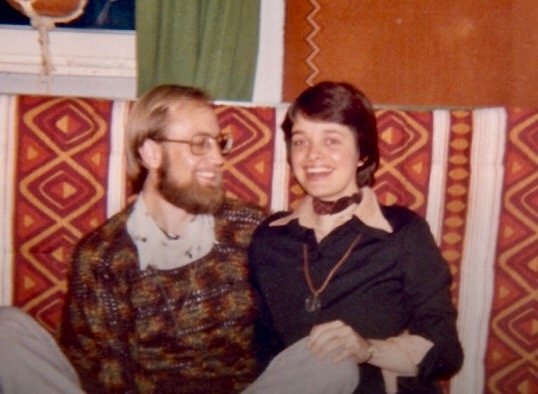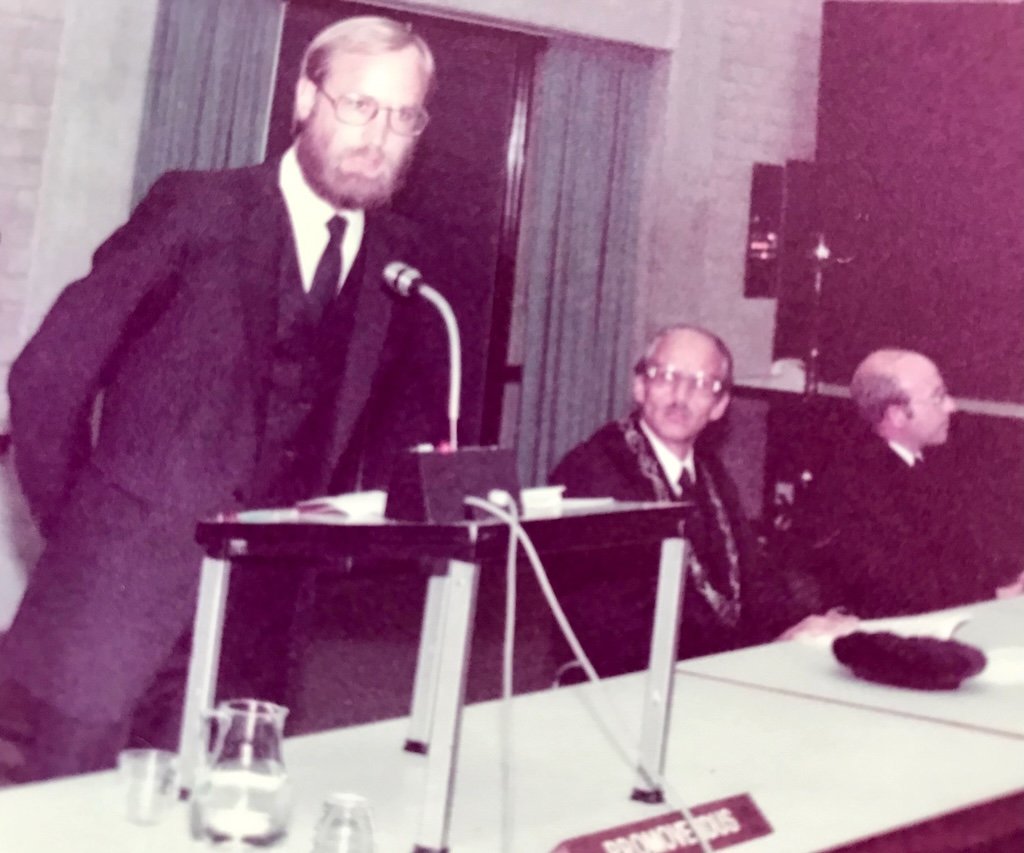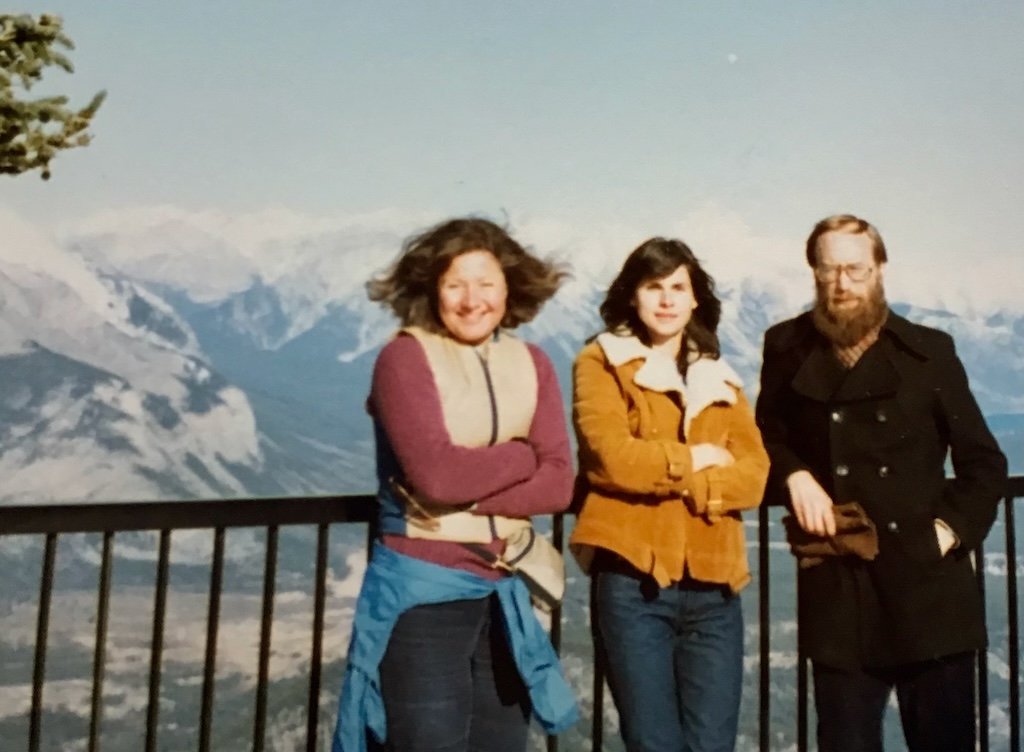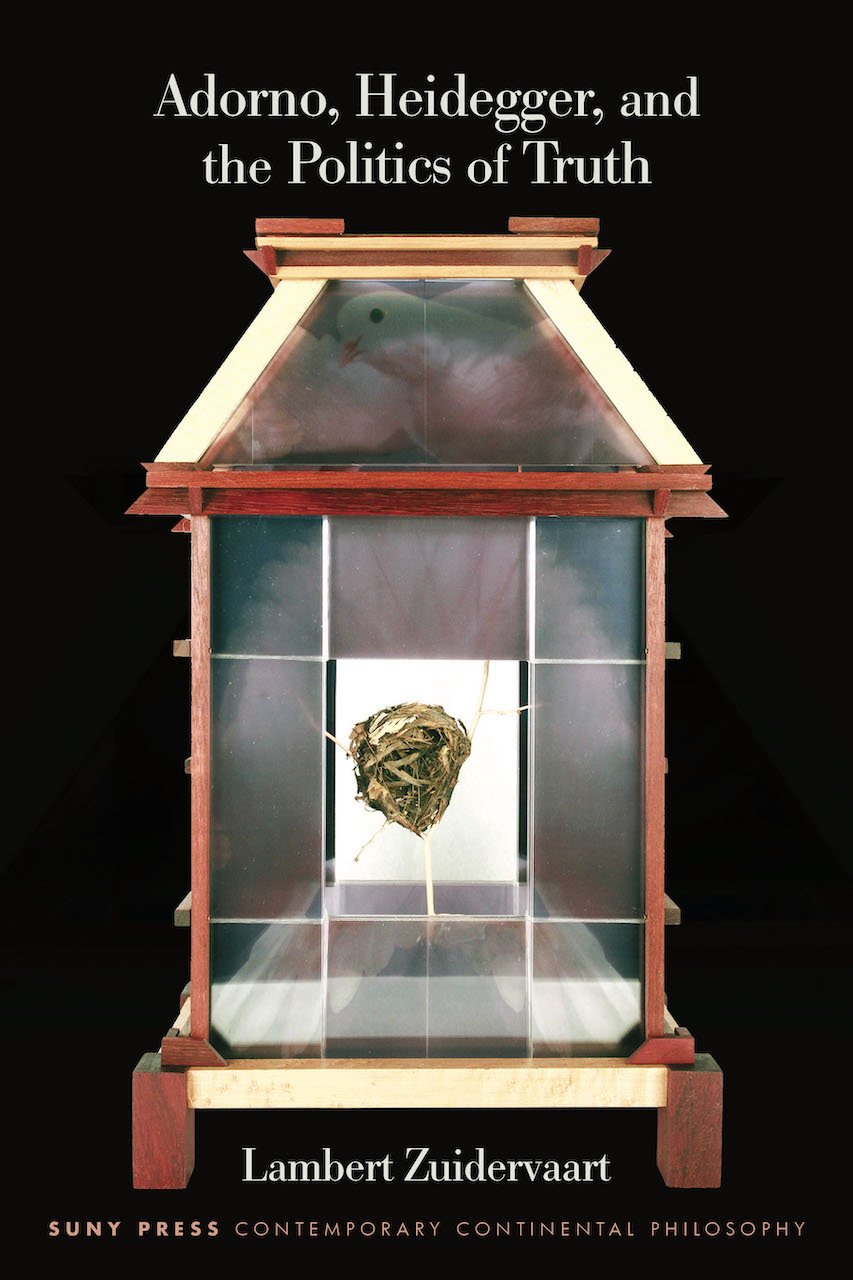Hope for Truth
Note: This blog post provides background and context for my latest book, titled Adorno, Heidegger, and the Politics of Truth, which has just been published by SUNY Press. It incorporates much of my post Hope for Truth in a Post-Truth World on the publisher’s website.
Lambert and Joyce in their Berlin love nest, 1978
In September 1977, nine months after our wedding, Joyce Recker and I moved to West Berlin. We lived there for nearly three years, in a tiny student apartment we turned into a friendly love nest. It was like an extended honeymoon. In a geopolitical hotspot where, initially, we knew no one and barely spoke the language, Joyce and I truly became loving partners for life.
Theodor W. Adorno
We moved to Berlin so I could do research for a dissertation on the philosopher, musician, and social critic Theodor W. Adorno (1903-1969). Adorno was a well-known figure in German intellectual culture, and he had been a leading member of the Institute for Social Research in Frankfurt—a group known collectively as the Frankfurt School.
Theodor W. Adorno, 1964. Photo by Jeremy J. Shapiro, CC BY-SA 3.0, via Wikimedia Commons
Both Jewish and a Marxist, Adorno lived in American exile for most of the Nazi era, first in New York and then in southern California. There he wrote some of his most important books, including Dialectic of Enlightenment (with his close colleague Max Horkheimer), Minima Moralia, and a pathbreaking group project in social psychology titled The Authoritarian Personality. After World War Two ended, Adorno and Horkheimer returned to Frankfurt, reopened their Institute, and became prominent professors and administrators at the Goethe University. (I tell more about Adorno’s life and work in my essay for the Footnotes to Plato series published by the Times Literary Supplement.)
By 1977, several of Adorno’s books had been translated into English, although usually not very well, and articles about his work were starting to appear in English-language journals. Much of the secondary literature was in German, however, and the leading Adorno scholars were in Germany. They included Carl Dahlhaus, a prominent musicologist and philosopher of music who taught at the Technical University in West Berlin. I was especially interested in Adorno’s philosophy of music; Professor Dahlhaus was the main reason Joyce and I moved to Berlin.
Refractions
Lambert and Joyce receiving congratulations after PhD ceremony, June 26, 1981
But I did not end up writing a dissertation on Adorno’s philosophy of music. Instead, I wrote about the general philosophy of the arts in his book Aesthetic Theory, which he was still working on when he died. I wrote it under the co-supervision of Calvin Seerveld at the Institute for Christian Studies (ICS) in Toronto and Johan van der Hoeven at the Vrije Universiteit (VU) in Amsterdam. Joyce typed the entire dissertation, titled Refractions: Truth in Adorno’s Aesthetic Theory, and I dedicated it to her, quoting Adorno in German: “During our time in Toronto, Berlin, and Amsterdam, my wife has shared with me ‘das unwachsame Vertrauen des gemeinsamen Lebens’ [the unwatchful trust of life together]. Together we began, developed, and completed this dissertation. I gratefully dedicate it to Joyce Alene Recker, a lovely companion, a faithful source of joy and strength” (Refractions, p. ix).
Lambert defending his dissertation at the VU Amsterdam, June 26, 1981
I successfully defended the dissertation at the VU in June 1981. Soon afterwards we moved to Edmonton, Alberta, where Joyce resumed her undergraduate studies in music and visual art and I taught philosophy at the King’s College (later, King’s University). Now, as a newly minted PhD who had done most of my doctoral research and writing in Europe, I needed to make Adorno’s thought intelligible to an English-speaking audience where analytic philosophy is the prevailing style.
Beginning in Banff
Susan Buck-Morss, Catherine Gallagher, and Lambert Zuidervaart in Banff, AB, October 1982. Photo by Martin Jay.
Fortunately, the American Society for Aesthetics decided to hold its 1982 conference in Banff, Alberta, just a four or five-hour drive from Edmonton. I submitted a paper on Adorno’s idea of artistic truth. To my pleasant surprise, the program committee not only accepted it but also invited Susan Buck-Morss and Martin Jay, two leading scholars on the Frankfurt School, to comment on my paper. It was a joy and privilege to meet them in Banff for the first time.
Few others at the conference had read much by Adorno, however; the first English translation of his Aesthetic Theory did not appear for another two years. Moreover, Adorno’s writings are notoriously difficult to understand. He wrote mostly in German and within a German philosophical tradition; he deliberately cultivated a provocative and idiosyncratic style; and the initial translations of his major works—Negative Dialectics and Aesthetic Theory—were deeply flawed. In addition, his central concepts challenge the Western philosophical tradition, and they lie well outside the mainstreams of contemporary analytic philosophy. Thus, explaining Adorno’s thought has become a lifelong project.
Artistic Truth
This is especially so of Adorno’s idea of artistic truth, the topic of my conference paper in Banff. As a gifted musician who wrote extensively on modern art, Adorno believed artworks can present truth that scientific and philosophical discourse can neither replicate nor replace. Moreover, artistic truth is crucial to the critique and redirection of a false society, he claimed. Already here we have two notions of truth—artistic truth and societal truth—that are foreign to analytic philosophy. Most analytic philosophers limit the notion of truth to that which can be stated or asserted in language, to what we can call propositional truth.
As my attempts to explain Adorno’s idea of artistic truth turned into the book Adorno’s Aesthetic Theory (MIT Press, 1991), I became convinced of two things. First, that Adorno was largely right about art’s capacity to carry truth, and second that, building on his thought, I needed to develop my own conception of artistic truth and present it to my colleagues in Anglo-American aesthetics. This led to a book titled Artistic Truth (Cambridge University Press, 2004).
Truth as a Whole
That was just the beginning, however. To argue that artistic truth is both different from propositional truth and legitimate in its own right, one really needs to offer a conception of truth as a whole within which we can distinguish artistic truth from other sorts of truth. So I set out to do this, eventually publishing several books on the topic, most importantly Truth in Husserl, Heidegger, and the Frankfurt School (MIT Press, 2017) and Social Domains of Truth: Science, Politics, Art, and Religion (Routledge, 2023).
Adorno, however, never clearly spells out his own conception of truth as a whole, despite its centrality to his philosophy, aesthetics, and social critique. Having used Adorno’s work to build a new conception of artistic truth and then having situated my own conception in a more comprehensive account of truth as a whole, I now faced two challenges. First, could I make intelligible Adorno’s implicit conception of truth as a whole and situate his idea of artistic truth within this? Second, could I demonstrate both the connections and the differences between his comprehensive conception and my own?
My new book Adorno, Heidegger, and the Politics of Truth takes up both challenges. Through close, selective readings of Negative Dialectics, Aesthetic Theory, and Adorno’s lecture courses from the 1960s, I systematically reconstruct his comprehensive conception of truth. I also sort out what, in light of my own comprehensive conception, Adorno’s approach can offer in an allegedly post-truth society.
Despite his harsh critique of capitalist society, Adorno never gave up hope for what he called “the humanly promised other of history.” He hoped that, in the end, truth would prevail. Although I would state it differently, I share this hope. My new book on Adorno tries to show why and how. And its cover image of such hope, from a sculpture by Joyce titled “Longing for the Wholly Other,” subtly recalls the book’s humble beginnings: in the shared adventures of two newlyweds who nested together in West Berlin.






